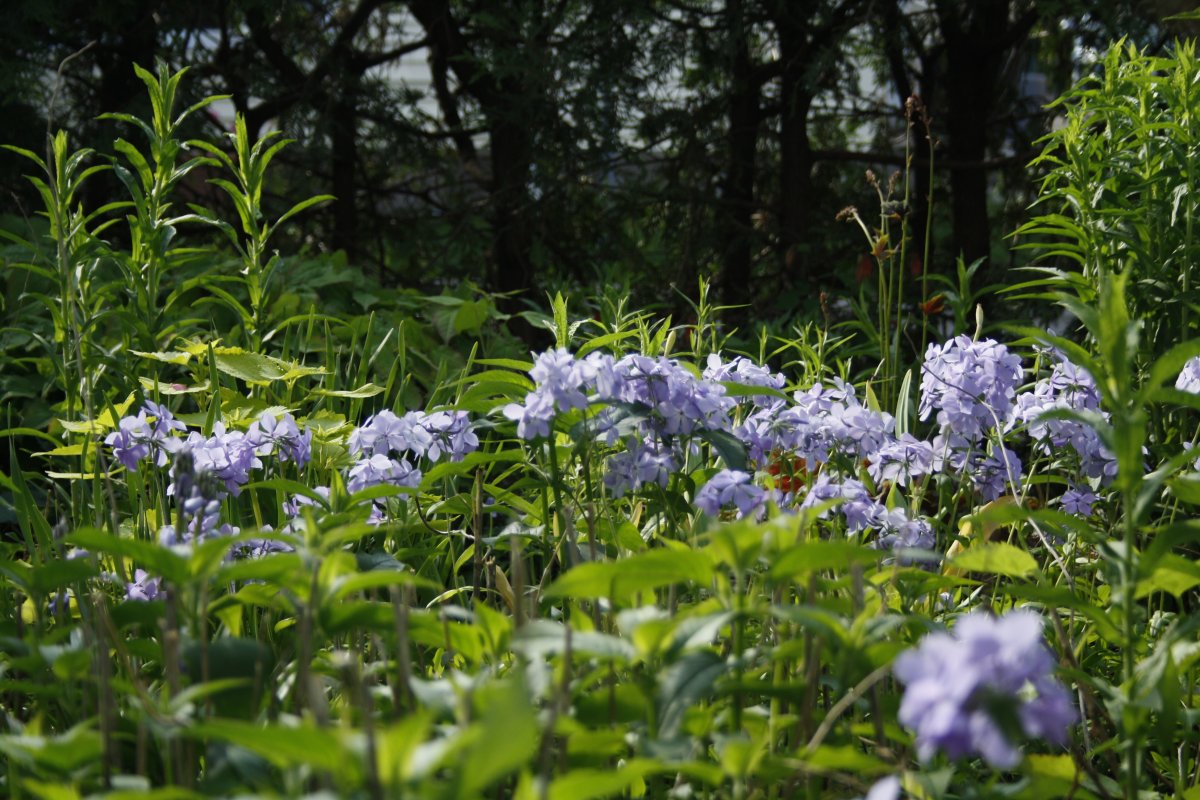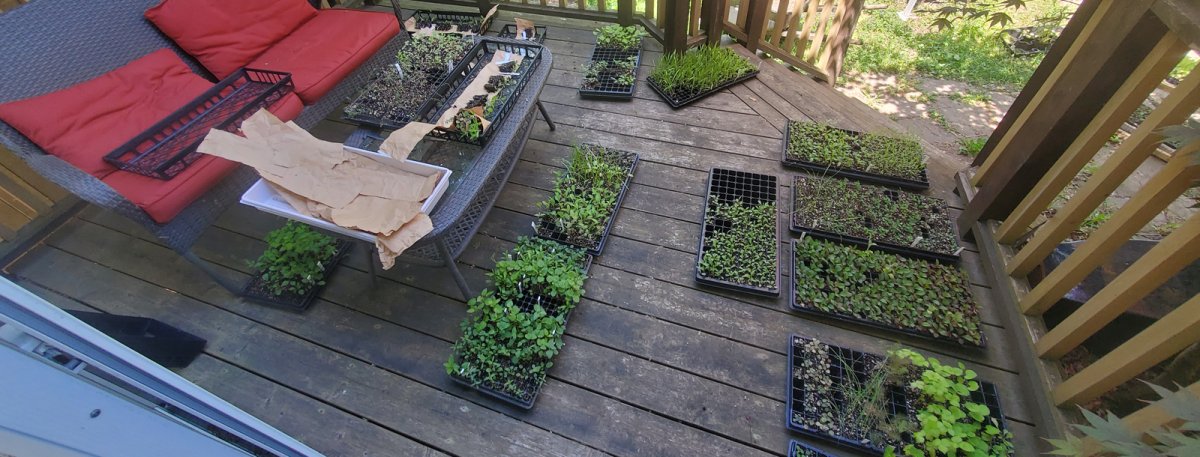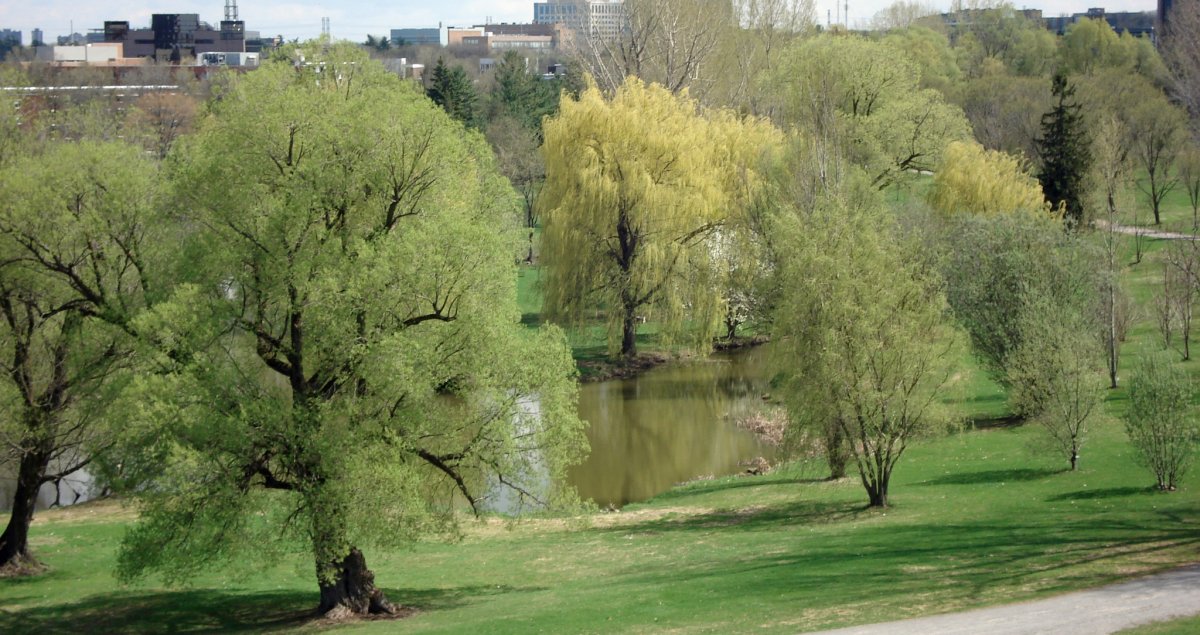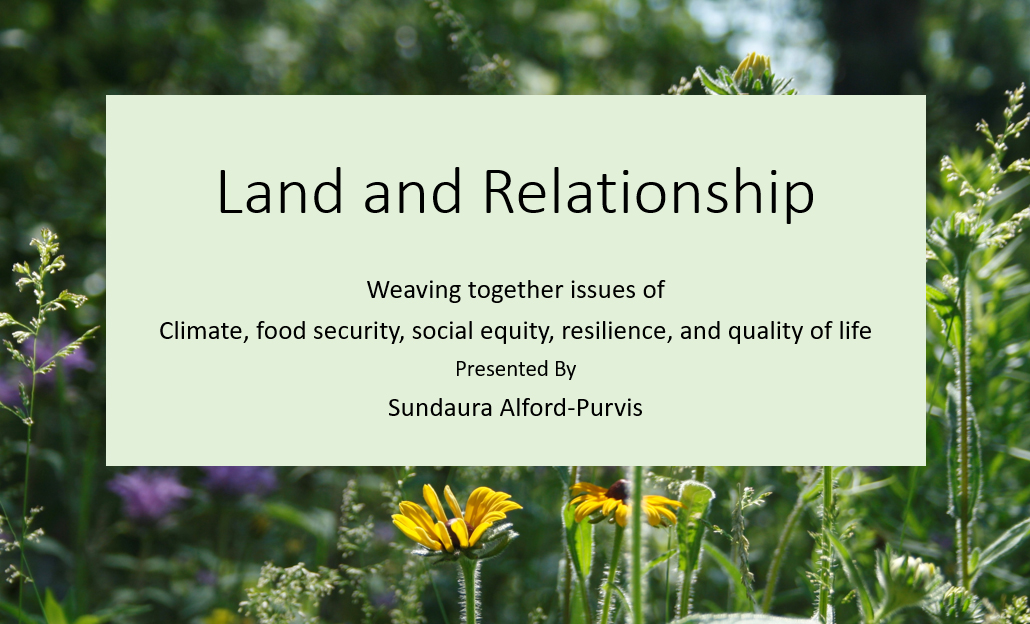In my 18 years of designing gardens and landscapes, these are some of the most important things that I have learned:
- Make as few changes and long-term plant choices as possible before spending at least a year getting to know the existing space and plant community. So many possibilities are lost because we hurry to do the work that feels urgent to us on our personal timelines.
- If you are transitioning from an existing perennial ecosystem to a different perennial ecosystem, plant annuals in the space for one or two years as a transitional buffer so the established species don’t resurge and overwhelm the new ones. This approach minimizes the need for heavy labour or fossil fuel powered disruption and for extraction or transportation of soils and other materials.
- If you are transitioning from bare soil or a low diversity system (turf, monoculture etc.) to a complex, perennial system, plant a mix of annual species for at least a year to help revive the soil biology before planting the perennials.
- For both of the previous points, arborist wood chips, or some other form of organic matter that is usually considered waste, is your friend. A nice thick layer of coarse, carbon rich material will kick start the fungi growth that builds soil carbon and improves both water-holding capacity and drainage. Lay it down in the fall, if possible, and plant the annuals right through it next spring.
- Start with native species. There are so many more than you might expect based on what you are likely to encounter in a stroll through a garden center or a perusal of seed catalogues. There is a very high likelihood that there is a native species that will suit the space you are working with, meeting both your needs and the needs of other species that also have a right to thrive in that space. A lot of defaulting to European and Asian species is nothing more than cultural momentum.
- Include species that feed humans. We need to eat. We can either have that need met by a complex system that we can help to tend, cycle organic matter back to and respond to by adjusting our seasonal consumption, or we can have that need met through a food system that has become distressingly fragile and exploitative of humans, animals, ecosystems and soils. -This is where non-native species often have the best reasons for being incorporated into your local ecosystem.
- Accept that some plans won’t have expected outcomes. Some species that seem like appropriate choices at first will end up not thriving in some settings without a level of intervention that is harmful to the ecosystem. If something simply isn’t suited to the space, look for alternative ways to get your underlying need met.
- Be flexible but plan for the long term. Check climate forecasts for your area and consider the lifespan of the species you are planting and their capacity to survive, or thrive, in the high and low temperature ranges, or changing rain patterns, that are expected in the coming years and decades. There is lots we don’t know about future growing conditions, but we can include the bits that we do know in our decision making.
The Micro-Nursery Project
Or: Justifying buying all the seeds by making locally native plants more accessible to more gardeners with a minimal ecological footprint.
~~~- I hosted a live Q &A related to this blog on January 22, 2021. The recording can be found at the end of this post.~~~
Beyond the excuse of growing all the plants, there really is a bigger issue that I’m picking away at with this project.
As a lot of people who decide to plant a pollinator garden find out, sourcing native plants often feels more like a scavenger hunt than a typical shopping trip. Leads about where different species can be found are often shared in social media groups. Directions include things like ‘You can find the [as in just one] rack of native plants in the corner with the vegetable starts’ or, ‘These three species of native shrubs can be found at this garden center and this other one got a tray of trilliums today but they are selling out fast!’ and then there is the whole ‘cultivar’ and ‘native to where’ rabbit hole.
Given how many plants are sold every year in this city, it shouldn’t be this hard to find species native to this province.
And, if you dig even deeper, questions about how were they grown (heated greenhouse? pesticides? concentrated fertilizers?) where were they grown (shipping?), where the seeds came from, where the plastic pots and tags will end up etc. start to come up.
All of which makes trying to take care of pollinators a considerably more fraught undertaking than it seemed at the start.
All this, along with conversations with others working on the issue of local native plant availability, led me to ask: How much can I reduce the ecological footprint of growing plants while also making native plants accessible to as many people as possible?
I’m also fairly strongly of the opinion that saving the world should be a feasible day job so part of this is about whether a micro-nursery can be financially sustainable as a part time or add-on activity.
I don’t have the answers to everything, but this is what I did in the first year
A question to ask when choosing plants in a heating climate.
Summers are getting hotter. As I’m writing this, BC and Alberta are experiencing a record-breaking heat wave, with actual temperature readings in the upper 40s. This spring in Ottawa, Ontario included temperatures in the mid 20s before the middle of April.
This is a trend that we’ll be living with for some time to come.
Trees planted now, if they can withstand the coming heating and extreme weather, will be experiencing this trend for far longer than you or I will.
How can we help improve the chances that the trees we plant will be around for decades to come?
I recently gave a talk on shifting from cold thinking to warm thinking when it comes to how we approach systemic challenges, especially from a climate and ecosystem perspective.
I also talked about moving from a model where western science extracts Indigenous knowledge in an effort to find solutions to one where the accumulated information from western science is brought into Indigenous relationship systems.
I'm pretty happy with how it came together.
The PDF of my presentation, which includes click-able links, can be downloaded here:
Over the course of a two-decade-plus career working in the horticultural industry, the question of how to work with plants and landscapes in a sustainable way eventually led me to quite a few Indigenous thinkers and teachers.
This, in turn, led me to asking the question of what I had that I could give back. It is a question that has rolled around in my head for quite a long time. While the first reaction is to ask what I can offer directly to Indigenous communities, I’ve slowly begun to recognize that the Indigenous communities aren’t really where my help is needed. They are more than capable of creating their cultural resurgence without one more white lady in the mix.
A bout of media coverage around one more piece of proof of the brutal reality of Colonial harms inflicted on the Original Peoples of this land has created a new flurry of ‘What can I do?’ as we experience the discomfort of the unraveling of the social narrative that many of us were raised to. The question is often a reaction to that discomfort, the seeking of a way to process it so it stops being so uncomfortable.
I would suggest, as many Indigenous people have suggested, that the best thing to do with that discomfort is not to run from it. Instead, we need to sit in it. To let it change us.
And change, deep, visceral, foundational, cultural change is what is really needed.
But changing culture requires changing people. Changing people requires changing the ways that we think. Decolonization of culture starts with the end of thinking and acting within a Colonial framework.
Easier said than done.
I’ve been working through an idea lately. One that is uncomfortable, as someone who descends from settlers and who has spent a lifetime as a gardener and a professional in horticulture, but is also important in my journey to find my role and understand my responsibilities within my ecosystem.
Horticulture, as it is practiced in most gardens and landscapes within what is currently Canada, is a physical practice of colonization.
- We remove native vegetation, even native rock and soil, and replace it with more familiar or tractable species and materials.
- We compose spaces that are pleasing to a culturally instilled appreciation of order and predictability.
- We select plant compositions for appeal to human centered aesthetics rather than for ecological role.
- We mow and trim and manicure, to keep the landscape in a state of stasis rather than progression.
- We rake away the leaves and stems that cover the ground and feed the soil and lay down decorative mulch in their place.
- We call land ‘property’.
But most of us don’t come to gardening with the intention of practicing colonization. We come to gardening with a desire to nurture a relationship with the rest of nature.
So how do things go so wrong?
The foundation of contemporary landscaping practices can be traced back all the way to the rise of agriculture. Agriculture in the form of tilling land and growing annual species over large areas. Altering the land in a way that ensured an abundance of resources in the short term, but that relied on steady expansion into new places, as the land that was altered lost vitality.
This expansion eventually became what we now know as colonization.
It replaced adaptability and local knowledge and relationships with land and ecosystems with standardized practices, with predictable outcomes, in simplified ecosystems. Many now simplified to the point of monoculture where there were once thousands of species.
Among the core costs we have all paid for this are the losses of relationship, resilience and complexity and of the vitality of the ecosystems that once built up soil and watersheds through the interactions of all of the species that existed within those ecosystems, including the actions of the human species.
Can just changing how we garden actually fix this?
No, not on its own, by but shifting away from a practice of imposed order and stasis, of simplified predictability, in our relationship with the land and ecosystems we live within, I believe that we can begin to re-weave the patterns of thriving, diverse complexity, of celebrating the gifts that life offers when it is free to exist in and of its own right. This can give us a foundation of practice for expanding those patterns into how we exist within the world. We can physically engage in the practice of dismantling of the original driver of colonization. Inviting in and celebrating messy, unordered complexity, and learning to recognize the strength, vitality and resilience of the relationships and interactions that result, can help erode the culturally enforced supremacy of ordered monoculture that is both violent and fragile.
Gardens cared for, rather than dominated, are incredibly beautiful. It is a different kind of beauty. A beauty of health and complexity, of growth, progression, vitality and abundance.
The role of the gardener is this is one of slowing down, observing and celebrating.
When we are beginning our relationship in a place where the complexity and vitality has been damaged by past actions, our role is also one of bringing the species that will form the foundation of the ecosystem back to the land. Of rematriating the plants that feed the web of life, from the soil to the butterflies to the humans. To observe how water moves and where it is needed. To observe and care for young ecosystems that are finding their balance, while also being patient enough to accept that they will stumble and struggle at times, but to be caring enough to nurture them when needed. To take the role of facilitator and cheerleader rather than one of domination.
This is an active, physical process of re-learning how to be in relationship, to dance with the garden, rather than insisting that it march to our imposed rhythm. Re-learning how to be in relationship with all the glorious, messy diversity of life is something that I believe, from the top of my introvert head to the soles of my gardener’s feet, is absolutely necessary.
While these words are all mine, the thoughts have been seeded and nurtured by a diversity of voices. Among many others, these include:
Rowen White
I’ve been seeing a lot of posts on Facebook about not tidying the garden until the temperature consistently reaches 10c.
While I agree with the intent, like most things, we can dig a bit deeper into the issue.
- My first thought is that, by the time the temperature reaches a consistent 10c, many of the plants in the garden are growing, at which point removing old stems can damage the new growth.
- My second thought is that cleaning the garden shouldn’t involve removing any of the organic matter anyway, its what your soil life feeds on and nests is.
- My third thought is that I need to get the organic matter down to ground level for it to protect the soil, and that is hard to do once the new growth starts to fill in.
So, what does all of this mean when it comes to spring cleanup?

What I do is:
Wait until the soil starts to dry out. If you are leaving footprints, leave it alone, it takes a long time to soil to recover from compaction.
Pick up all of the garbage that has blown into the yard over the winter and any of the ‘gifts’ left by neighbourhood cats and dogs.
Remove matted leaves from any of the tiny plants that will suffer from the cover. My curly onion for example, would get quite stressed if I didn’t pull the mat of maple leaves off of it.
Manually (no power tools like lawnmowers or leaf shredders, they chop up the plant material and the critters) cut up the stems that are still standing and drop them to the ground as mulch. I generally use secateurs and chop the stems into 6 to 8” long sections. They will soon disappear under the new foliage and they will provide a great habitat layer for lots of critters, while also protecting and feeding the soil life.
Prune any semi woody perennials (Russian sage, lavender, hyssop etc.) and chop and drop those stems as well.
And that’s it. No leaf blowers, shredders or other highly disruptive activities. No organic matter removed from the ecosystem. Lots of habitat space among the chopped stems. Plants that are all set for the next growing season.








